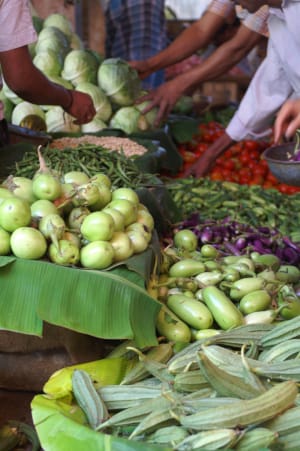Veranda Tales-Hold your horses

Storytelling has been an integral part of my life since childhood. I grew up listening to stories during the hot summer evenings and nights with my cousins. Mothers and grandmothers would gather all of us children for story time. It was usually pitch dark except for a very faint light coming from the flickering candle. Power cuts were as frequent as the hot and humid summer days. We all spread out on a cool concrete floor or bamboo mats on the veranda intently listening to fascinating stories about kings, queens, princes, princesses, and peasants alike. Stories about love, life, families, and people entertained and taught us life skills. These stories transported us to distant worlds, strange yet familiar. Often the same story told by two people sounded different as storytellers added new twists and turns adding their personal style and flair to the stories.
Storytelling wasn’t limited to summer evenings and bedtime. I was surrounded by adults who didn’t pass up an opportunity to share their wisdom using the art of storytelling. These rich vibrant oral traditions include songs, poems, stories, and సామెతలు (Sametalu are proverbs in Telugu). Men and women sing songs as they work in the fields, grinding grains and spices and doing other daily chores at their homes. Stories are often used to teach important life lessons, interpersonal skills, and survival skills. These stories and the time spent listening to them made our lives richer leaving an impression on me. This series is all about reliving those memories as I share these stories.
తినబోతూ రుచులు అడిగినట్లు (thinabothu ruchuladiginatlu)
తాతయ్య (Tatayya is grandfather in Telugu) owned a transportation company that ran buses, lorries, and small cars to ferry people and goods between neighboring towns and villages. తాతయ్య (Tatayya) and అమ్ముమ్మ (Ammumma is maternal grandmother in Telugu) in the fertile Godavari river delta. It can sustain three crops a year and is home to juicy delicious మామిడిపళ్ళు (Maamidipallu are Mangoes in Telugu). తాతయ్య (Tatayya)’s staff loaded baskets full of fresh seasonal fruits and fresh vegetables from neighboring farms on to their trucks and buses to transport them to local markets in the region. They would transport fresh fish and prawns from seashore and river banks to local markets.
తాతయ్య (Tatayya) asked his staff to buy fruits, vegetables, and fish for the family. After delivering the fruit at local markets, his staff would come by the house to drop off the fresh baskets of fruits they bought for the family. They would take the fruits to a room dedicated for fruit storage and spread them in hay for ripening. తాతయ్య (Tatayya) and అమ్ముమ్మ (Ammumma)’s house was very large and built on higher ground with several steps leading down to the ground level at the front and back of the house. There were plenty of spare rooms to store large quantities of fruits. A room in their house was dedicated for storing fruits all year round. Depending on the season, the room was filled with మామిడిపళ్ళు (Maamidipallu are Mangoes), జామ (Jaama is Guava), వెలగపళ్లు (Velagapallu are Wood Apples), కమలాలు (kamala oranges), బొప్పాస (Boppasa is papaya), and many other varieties of delicious tropical fruits. This room was called the మామిడిపళ్ళు (Maamidipallu) room. In addition to fruits, తాతయ్య (Tatayya) asked his staff to bring fresh fish from a neighboring town, భీమవరం (Bhimavaram). Fish was stored in a large water trough in their backyard. When a large basket of fish was delivered, అమ్ముమ్మ (Ammumma) would share the bounty with neighbors.
అమ్ముమ్మ (Ammumma) was a strong woman of short and sturdy stature. She wore cotton sarees and white blouses. She was on her feet from the time she woke up until it was time for bed. She would walk many times a day to the front veranda from the kitchen at the back of the house to check on తాతయ్య (Tatayya) who was bedridden. She would bring him breakfast, lunch, and dinner. She would climb up a flight of stairs from the kitchen to the main level and walk across the entire house to get to the verandah. If తాతయ్య (Tatayya) happened to be resting in the front yard, she would climb down another flight of stairs to get there. She would backtrack climbing up to the verandah and back down to the kitchen after checking on తాతయ్య (Tatayya). She was all over the house doing her household chores. This was how I remember her, always busy running around the house taking care of everybody. She would stop once in a while to wipe sweat off her brow with her saree.
When తాతయ్య (Tatayya) was healthy and the business was thriving, the house was full of relatives, friends, and family. It was a happening place with kids running around, servants, and staff bringing fruits, vegetables, fish, and prawns. అమ్ముమ్మ (Ammumma) was busy cooking for everybody in the family while తాతయ్య (Tatayya) was busy running the business. అమ్ముమ్మ (Ammumma) cooked delicious vegetarian, mutton, chicken, fish, and prawn curries. She had a full house to feed including her children, her parents, her older sister and older brothers who lived with her and తాతయ్య (Tatayya). On top of that guests who would stop by all times of the day and night. It was also home for her children’s friends whose parents lived in nearby villages. They stayed at అమ్ముమ్మ (Ammumma) and తాతయ్య (Tatayya)’a house during the school year.
If you ever had the good fortune of enjoying a traditional south Indian meal, you would understand the work involved in making one. The meal starts with a serving of steaming hot rice mixed with a serving of dal and a generous amount of hot ghee. The second course starts with rice mixed with vegetable or meat or chicken curry. A third course follows with rice with vegetables cooked in tamarind sauce or sambar or rasam. The final and the most important course is rice with homemade curd yogurt often eaten with a small piece of jaggery.
While everybody was enjoying a delicious meal, అమ్మ (Amma is mother in Telugu) would run away from the dining table with a small plate of rice and curd. She couldn’t stand the smell of meat and fish. She is a discriminating and disciplined eater. She grew up eating rice and curd with a generous amount of fruits from their fruit room. She ate her favorite vegetables and dal. అమ్మ (Amma) was the baby of the house even though she wasn’t the youngest. Her ముద్దుపేరు (mudduperu is nickname) is బేబమ్మ (Bebamma), a combination of Baby+Amma. అమ్మ (Amma) is an affectionate way to address daughters and younger women in the family. Adults in my family address or end a question or sentence with అమ్మ at the end when they are talking to younger women in the family. అమ్ముమ్మ (Ammumma) would make Idli just for అమ్మ (Amma) and served them with sugar and ghee so అమ్మ (Amma) wouldn’t go to school hungry. అమ్మ (Amma) wouldn't have enjoyed eating breakfast made for others in the house. Even to this day, she meticulously picks out small mustard seeds from Upma before taking a bite.
అమ్ముమ్మ (Ammumma) took good care of her precious daughter, బేబమ్మ (Bebamma) until she had to say bye when అమ్మ (Amma) got married. She placed the responsibility of her daughter in my father’s hands. నాన్న (Nanna is father Telugu) took on the responsibility of making sure అమ్మ (Amma) had a good supply of vegetables to make meals she could eat and enjoy. అమ్మ (Amma) returned the favor by learning to clean fish, prawns, and meat and cook delicious food నాన్న (Nanna) enjoyed. She would jokingly say how she ended up in a meat loving household and needed to learn to handle and cook meat in a hurry.
When she encountered a new snack or dish she would pick up a small piece and while staring at it with suspicion, would ask నాన్న (Nanna), “నాకు నచ్చుతుందా? (Will I like it?). నాన్న (Nanna) had become an expert in determining how a food would taste on అమ్మ (Amma)’s palate. He would promptly say “నీకు నచ్చదులే (neeku nachchadule - you won’t like it) or “తినవే (thinave - eat it).
నాన్న (Nanna) and అమ్మ (Amma) came to visit me for the first time after I moved to USA. I was excited to show off my culinary skills I acquired after moving away from home. I cooked delicious chicken biryani before I went to pick them up from the airport. I offered meal and అమ్మ (Amma) looked at me with sad eyes. It dawned on me that అమ్మ (Amma) wouldn’t touch chicken. I was mortified that I forgot such important information. My then good friend and now my life partner came to my rescue or perhaps అమ్మ (Amma)’s rescue by making a delicious vegetarian dish and lending her his pressure cooker so she could make dal for herself during her visit. Thus, their bond that started over a pressure cooker is still strong today.
After నాన్న (Nanna) passed away, అమ్మ (Amma) lived with my family for a period of time. While she lived with us, my life partner took on the role of answering అమ్మ (Amma)’s “Will I like it” questions about food. They discovered their shared love for bananas, Mother’s Taffy cookies, and strict discipline when it comes to sweets, cookies, and candy. They are annoyingly proud of their discipline. My sweet tooth proves that apple fell very far from the tree when it comes to అమ్మ (Amma) but very close to the tree when it comes to నాన్న (Nanna). అమ్మ (Amma) is very disciplined when it comes to eating sweets. She discovered her love for Biscoff cookies, Ritz crackers, Mother’s Taffy cookies, and Werther’s hard candy. She would take out one single cookie to have with her afternoon tea. One single pack of cookies would last several weeks. On the other hand if I get my hands on a pack, it will disappear very quickly. When I ask her what she would like before my visits to India, she says “Ask my అల్లుడు (alludu is son-in-law), he knows”.
తినబోతూ రుచులు అడిగినట్లు (thinabothu ruchuladiginatlu) sameta reminds me of అమ్మ (Amma), amusing tales surrounding అమ్మ (Amma)’s discriminating eating habits, and her asking whether she would like something even before taking a bite. This sameta means “Asking how it tastes instead of waiting until they taste it”. It is also used when someone wants to know the details about something they would find out very soon.

